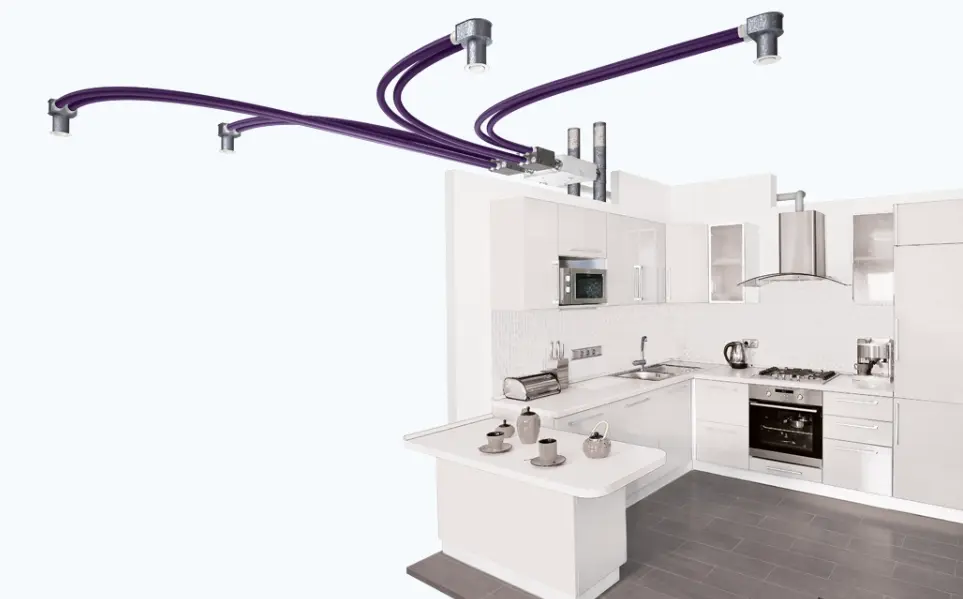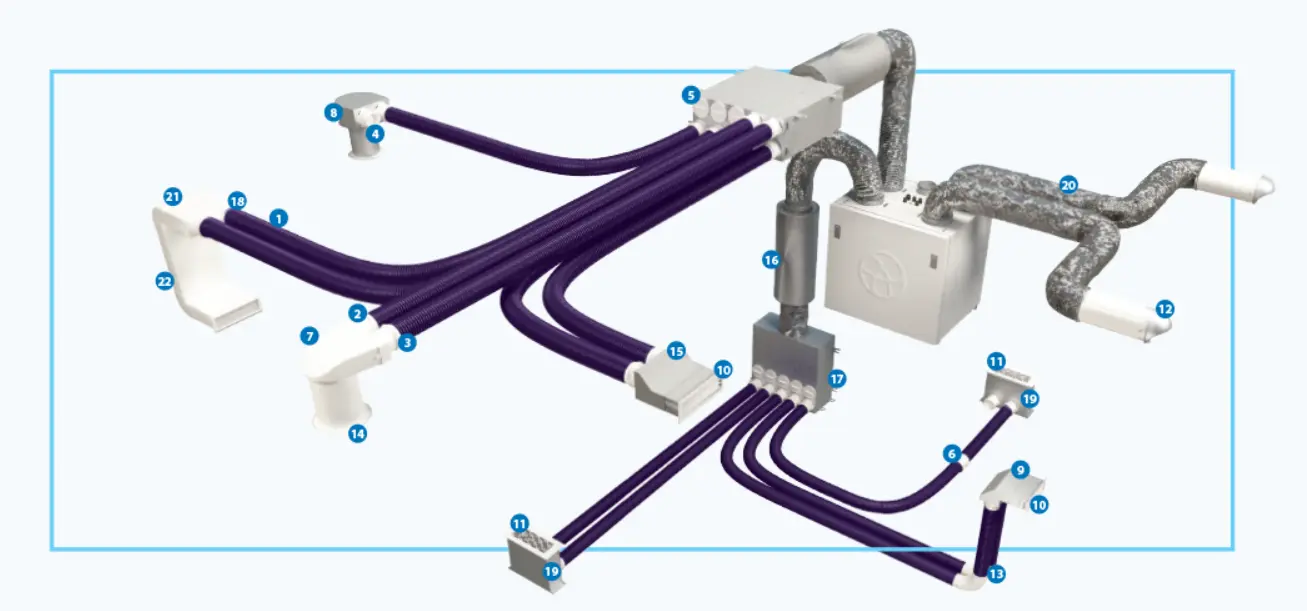Central Ventilation: A Comprehensive System for Your Entire Building.

Central ventilation - AHU: what is its purpose?
While the purpose of central ventilation is similar to that of local ventilation, achieving full building coverage with a local system would require multiple local ventilation units, strategically placed to ensure synchronized operation.
Central ventilation - AHU: it's components
In the diagram above (source: Blauberg), all components of a central ventilation system are illustrated. Here’s a detailed explanation of each:
Central Ventilation Unit: This is the core of the system. Its power and efficiency are determined by an authorized dealer based on the characteristics of the building where the system will be installed.
Depending on the model, the unit can connect to pre-heating registers, heaters, coolers, and additional sensors like humidity, CO2, VOC sensors, etc..
The unit connects to four ducts: two directed outside (for fresh air intake and stale air exhaust) and two inside (for distributing fresh air and removing stale air). Sound attenuators are installed on the ducts leading indoors to minimize noise from the central unit.
The main ducts travel to an air distributor, which splits the high air volume into smaller flexible ducts, each leading to different rooms.
These ducts come in various diameters, with 75 mm being the most common, providing an air flow of 30 m³/h. If a room requires more air, additional ducts are added. The same applies to exhaust air ducts.
Flexible ducts connect to ceiling terminals or vents, which are then fitted with ceiling diffusers or grilles.
A façade grille is installed outside to prevent foreign objects from entering the ventilation system.
The ducts are installed according to the required air volume for supply and exhaust. However, supply and exhaust ducts should never be connected to the same ceiling vent or grille, a common mistake in practice.
The components of the ventilation system are available in various versions and materials. The choice depends primarily on the customer, while our experts will advise on the most suitable materials.
To ensure all components are securely connected and airtight, connectors, caps, seals, internal and external couplings, clamps, and locking rings are used. If sharp bends are needed, 90- or 45-degree elbows are recommended, and a T-joint is needed to evenly distribute the main air supply/exhaust across multiple floors
All necessary materials can be found in our online store. However, we strongly recommend consulting with an expert before deciding on the installation of a ventilation system. Effective ventilation depends on the correct positioning of vents and the proper number of supply and exhaust ducts, as the industry recommends higher air flow in certain living and working spaces.
More information on required air flow will be provided in our next post. If you have additional questions or are considering installing a central ventilation system in your building, don't hesitate, send your inquiry .

